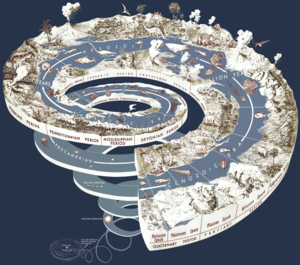You’ve heard it before, perhaps with different words. Gartner defines the “Nexus of Forces” as being “the convergence and mutual reinforcement of social, mobility, cloud and information patterns that drive new business scenarios.” The Nexus of Forces “is transforming the way people and businesses relate to technology. As it grows and matures it will become a key differentiator of business and technology management. Strategizing on how to take advantage of the Nexus should be a top priority for companies around the world.” Some variations of it will say “big data” instead of information. Others will include “the Internet of Things”, or will reduce it to SoLoMo (Social, Local, Mobile), or call it “Smarter Planet”. And if you look closely, even Tim O’Reilly’s “What Is Web 2.0?” article was already saying it: data is the next Intel Inside, software above the level of a single device, harnessing collective intelligence, yada yada yada. As we all try to make sense of the ever-changing world around us, the distinction between meaningless buzzwords and useful frameworks of patterns becomes blurred. Still, we tend to cling on to them as if they were the business equivalent of dogmatic tenets, until they are replaced by the next batch of technology jargon. Often, as this displacement process plays out, some of those perceived trends are dismissed as a pseudo-patterns or a gross misinterpretation of what was actually happening – you’ll find no shortage of people ridiculing the concepts of long tail and virtual worlds as relatively recent losing propositions now resting on the immense landfill of bad-ideas-that-sounded-good. If we could advance the clock and jump 100 years into our future, which of these trends will survive the acid test of time? My guess is as good as anybody’s else, but I would say that the right answer is: all of them – even the ones you may be dismissing now.

One of the big mysteries in Life Sciences is the phenomenon known as “The Cambrian Explosion”. Even though life is believed to have started on Earth about 3.6 billions of years ago, the first few billion years were kind of boring, going from plain unicellular organisms to some very simple multicellular ones:
(…) life was a modest thing. Bacteria had been around for about 3 billion years, but for most of this time they had had the Earth to themselves. Seaweeds, jellyfish-like creatures, sponges and the odd worm do start to put in an appearance a few million years before the Cambrian begins. But red in tooth and claw the Precambrian was not—for neither teeth nor claws existed. Then, in the 20m-year blink of a geological eye, animals arrived in force. (The Economist)
(… a) burst of diversification occurred, with the eventual appearance of the lineages of almost all animals living today (PBS.org)
There are plenty of possible explanations for the above. If you Google it, you’ll find potential causes as diverse as:
- Oxygen or calcium levels increasing above a critical mass threshold
- Development of vision, smell or taste
- Predators and preys co-evolution
- More sophisticated genetic processes
- Mass extinction just before that period opening up ecological roles
Whatever happened then, it’s unlikely to be just one of the items above. In fact, it may have been all of the reasons already mentioned, and many more.
The business world is – and has always been – heavily influenced by technology. However, what’s happening over the last few decades seems to be the business version of the Cambrian Explosion. Change is everywhere, and it’s accelerating at unprecedented levels. And, as we struggle to make sense of it, we attempt to rationalize what is happening and reduce it to a handful of trends: social, local, mobile, data intensive, smart, “cloudy.”
Our obsession with trying to identify “the next big thing” is highly influenced by the our collective and personal desire to understand the world and its events, big and small. The issue is that our capacity to understand deeply and completely is very limited: no matter how much information is available to us nowadays, the shelf space in our brains is probably not much bigger than what our human ancestors had hundreds of thousands of years ago. Thus, we often end up with widely accepted reasoning that are unlikely to be the full representation of the truth.
We – somewhat naively – say that somebody lost a war, an election, or a game, or a job because of this and that, but you’ll find plenty of counter-examples of people who won a war, an election, a game or a job despite of very similar “this and that” factors.
For example, Chris Anderson’s books “The Long Tail” and “Free” are often criticized as being badly timed or plainly wrong. If you read them again today, you’ll see that the actual issue is that, while his ideas were true here and there, they were not universally realized across the business world. But to be fair, no business concept can possibly apply in every situation.
It’s probably accurate to say that social, mobile, etc. are important concepts in the future of business and that ignoring them is ill-advised. But that does not mean that every business will be governed by those trends. Some will not, and their success will depend on a myriad of other factors. Assuming that there is no business success outside those five or six trends is as silly and narrow-minded as traveling back in time to the Pre-Cambrian period, and predicting that bacteria and algae won’t exist 500 million years in the future.



